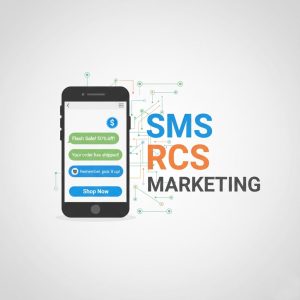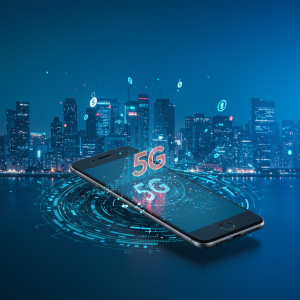CopyPublishInfluencer Marketing for Mobile Apps: The Ultimate Guide to App Growth in 2025

Why Influencer Marketing Is Essential for Mobile App Success
In today’s saturated app market, there are more than traditional marketing methods to stand among millions of participants. Influencer Marketing Mobile App has emerged as one of the most effective promotional strategies, with 89% of the markets reported that ROI is compared to other marketing channels from marketing marketing.
The Apple App Store and Google Play Store has more than 7 million apps available. The mobile app’s ecosystem continues to grow rapidly. This heavy competition makes visibility a significant challenge for app developers and abolition. The Influencer marketing material provides a unique solution by taking advantage of the trust relationship established between the creators and their audience.
The power of impressive mobile apps marketing lies in the ability to display the functionality of your app through authentic approval. When a reliable impressive person shows how they use and benefit from your app, their followers are more likely to download and tie themselves. According to recent industrial data, app has generated through impressive campaigns 37% higher retention rate than traditional advertising methods.
Finding the Right Influencers for Your Mobile App
Identifying influencers who align with your app’s purpose and target audience is crucial for campaign success. The effectiveness of your influencer marketing strategy depends heavily on partnering with creators who can genuinely connect with potential users.
Audience Alignment and Demographic Targeting
Start by analyzing the intended user base of your app. What age groups, interests and behaviors are characterized by your ideal users? Once you have set a clear demographic goal, you can search for the affected people whose followers carefully match these qualities.
For example, a training app for fitness will benefit from partnerships with health and well -being, whose followers are already interested in physical activity and self -improvement. Similarly, a productivity app can work better when promoted by business or technical effects, if the public has efficiency and organizational value.
Tools like SparkToro and HypeAuditor can help identify influencers whose audience demographics align with your target market. These platforms analyze follower data to provide insights into age, location, interests, and engagement patterns.
Relevance to Your App Category
Beyond general audience alignment, consider how an influencer’s content niche relates to your app’s functionality. The more natural the connection between an influencer’s regular content and your app’s purpose, the more authentic their promotion will feel.
For example:
- Gaming apps benefit from partnerships with gaming streamers and reviewers
- Finance apps align well with personal finance coaches and investment advisors
- Educational apps gain credibility through educators and subject matter experts
- Travel apps perform well with travel bloggers and adventure influencers
At mobiledominate.com, our research shows that relevance typically outweighs reach when it comes to conversion rates for app downloads. A micro-influencer with 10,000 highly engaged followers in your exact niche can often drive more qualified downloads than a celebrity with millions of general followers.
Engagement Rates over Follower Count
When evaluating potential influencer partners, prioritize engagement metrics over follower numbers. High engagement rates (likes, comments, shares, and saves relative to followers) indicate an active, attentive audience that trusts the influencer’s recommendations.
Industry benchmarks suggest looking for:
- Instagram: 2-3% engagement rate or higher
- TikTok: 5-6% engagement rate or higher
- YouTube: 4-5% view-to-subscriber ratio or higher
Micro-influencers (10,000-50,000 followers) and mid-tier influencers (50,000-500,000 followers) often maintain higher engagement rates than mega-influencers or celebrities, making them particularly valuable for app marketing campaigns with limited budgets.
Crafting Effective Influencer Partnerships for App Promotion
Once you’ve identified potential influencer partners, developing the right collaboration framework will maximize your campaign’s effectiveness and deliver measurable results.
Campaign Structures That Drive App Downloads
Different campaign structures serve different marketing objectives. For mobile apps, consider these proven approaches:
- App Walkthrough Videos: Detailed demonstrations of your app’s key features and benefits. These perform particularly well on YouTube and TikTok, where influencers can showcase functionality in depth.
- Day-in-the-Life Integration: The influencer incorporates your app into their daily routine, showing how it solves real problems. This format excels on Instagram Stories and YouTube vlogs.
- Challenge or Trend Creation: Developing a branded challenge using your app can generate viral momentum, especially on TikTok and Instagram Reels.
- Before-and-After Results: Perfect for productivity, fitness, or educational apps, this format demonstrates tangible outcomes from using your application.
- Live Testing Sessions: Real-time exploration of your app builds authenticity and allows audiences to see genuine reactions.
According to research by Sensor Tower, app install campaigns that feature authentic usage scenarios outperform abstract promotional content by up to 43% in conversion rates.
Tracking Links and Promo Codes
To measure campaign performance accurately, provide influencers with unique tracking links or promo codes. These tools not only quantify direct conversions but also incentivize their audience through exclusive offers.
Attribution platforms like AppsFlyer or Adjust can help implement sophisticated tracking systems that capture installs generated through influencer content, even when users don’t immediately download but return to app stores later.
Consider offering tiered commission structures where influencers receive compensation for:
- Initial app downloads
- User retention after 7 days
- In-app purchases or subscription conversions
This performance-based model aligns incentives and encourages influencers to focus on attracting quality users rather than merely driving download numbers.
Platform-Specific Strategies for Mobile App Influencer Marketing
Each social platform offers unique advantages for app promotion. Tailoring your approach to match platform strengths will optimize campaign performance.
TikTok: Showcasing App Functionality
TikTok’s short-form video format is ideal for demonstrating specific app features in creative, attention-grabbing ways. The platform’s highly engaged user base and powerful algorithm can rapidly amplify content that resonates.
Effective TikTok strategies for app promotion include:
- 15-30 second feature highlights
- “How-to” quick tutorials
- Before/after transformations
- Reaction videos to app experiences
According to TikTok for Business, ads featuring app demonstrations see a 40% higher conversion rate compared to static promotional content.
Instagram: Visual Appeal and Story Features
Instagram’s diverse content formats make it versatile for app promotion. Stories allow for multi-part app walkthroughs with swipe-up installation links, while feed posts create visually appealing showcases of your app’s interface.
Instagram Reels provide an opportunity for quick feature demonstrations, while IGTV supports more comprehensive tutorials. The platform’s shopping features also integrate well with e-commerce or marketplace apps.
Research from our team at mobiledominate.com indicates that Instagram Stories with clear CTAs generate up to 25% higher swipe-up rates for app installations compared to feed posts alone.
YouTube: In-Depth Reviews and Tutorials
YouTube excels for comprehensive app reviews, tutorials, and comparisons. The platform’s longer format allows influencers to explore your app’s full functionality and address potential user questions or concerns.
Effective YouTube app promotion formats include:
- Full app reviews (8-15 minutes)
- “Best apps for X” roundups
- Problem-solution demonstrations
- Comparison videos with competing apps
Google’s own research shows that 65% of consumers use YouTube to find solutions to problems—making it particularly valuable for utility, productivity, or specialized apps.
Measuring Success: KPIs for Mobile App Influencer Campaigns
Establishing clear performance metrics ensures you can evaluate campaign effectiveness and calculate accurate ROI for your influencer marketing investments.
Beyond Downloads: Comprehensive Success Metrics
While installs are an important metric, focusing exclusively on download numbers can lead to misleading conclusions about campaign success. A comprehensive measurement framework should include:
- Cost Per Install (CPI): The total campaign cost divided by the number of attributed installs.
- Retention Rate: The percentage of users who continue using your app after 1, 7, and 30 days.
- User Lifetime Value (LTV): The total revenue generated by users acquired through influencer channels.
- Engagement Metrics: Session duration, feature adoption, and in-app actions from influencer-acquired users.
- Brand Lift: Increased brand searches, app store page views, and social mentions resulting from campaign exposure.
Tools like Firebase Analytics and AppsFlyer can help track these metrics while maintaining attribution to specific influencer sources.
Attribution Models and Tracking Implementation
Implementing effective attribution tracking requires technical consideration. Options include:
- UTM Parameters: Append unique tracking codes to app store links shared by influencers.
- Promo Codes: Create unique referral or discount codes for each influencer.
- Deep Links: Direct users to specific in-app pages upon installation.
- SDK Integration: Implement attribution SDKs from platforms like Branch or Adjust.
A multi-touch attribution model recognizes that users may encounter multiple influencer mentions before downloading, particularly for higher-commitment apps like subscription services or productivity tools.
Scaling Your App Influencer Strategy: From Launch to Growth
As your app matures, your influencer strategy should evolve to support different business objectives at each stage of your app’s lifecycle.
Launch Phase: Awareness and Initial Downloads
During app launch, prioritize reach and first impressions with strategies like:
- Coordinated multi-influencer announcement campaigns
- Exclusive early access for influencer communities
- Launch competitions or giveaways
- Emphasis on unique value proposition and differentiators
Working with 5-10 mid-tier influencers often proves more effective than a single celebrity endorsement during this phase, as it creates multiple exposure points across different audience segments.
Growth Phase: Retention and Feature Adoption
As your user base grows, shift focus toward retention and engagement:
- Highlight advanced features through tutorial content
- Showcase success stories and user transformations
- Create community challenges around core app functionality
- Develop influencer-exclusive features or content
During this phase, long-term ambassador relationships often outperform one-off promotions, as recurring mentions boost retention and feature discovery.
Maturity Phase: Community Building and Loyalty
For established apps, influencer strategy should evolve toward community strengthening:
- User-generated content campaigns
- Influencer-led mastermind groups or forums
- Co-created features with influencer input
- Cross-promotion with complementary apps or services
According to Mobile Action, apps that maintain consistent influencer relationships during maturity phases see 28% higher user retention rates compared to those using only sporadic campaign bursts.
Budget Optimization for App Influencer Campaigns
Maximizing ROI requires strategic budget allocation across influencer tiers, content formats, and platforms based on your specific app category and target audience.
Cost Structures and Compensation Models
Influencer compensation varies widely based on platform, audience size, engagement quality, and content requirements. Common payment structures include:
- Flat fee: One-time payment for content creation and distribution
- Performance-based: Payments tied to installs, retained users, or in-app conversions
- Hybrid models: Combining base payment with performance bonuses
- Equity or revenue sharing: Particularly effective for long-term partnerships
For app developers with limited budgets, micro-influencers often deliver the highest ROI, with average engagement rates 60% higher than larger creators while charging significantly lower fees.
Long-term Partnerships vs. One-off Campaigns
Research consistently shows that sustained influencer relationships outperform single promotions for mobile apps. Benefits of long-term partnerships include:
- Increased authenticity as the influencer becomes a genuine app user
- Higher conversion rates from repeated exposure to their audience
- More detailed feature understanding leading to better demonstrations
- Opportunity for influencer input on app improvements
Consider allocating 60-70% of your influencer budget toward ongoing relationships with your highest-performing partners rather than constantly testing new creators.
Future Trends in Mobile App Influencer Marketing
Staying ahead of evolving trends will position your app for continued growth as the influencer marketing landscape develops.
AI-Driven Influencer Matching and Performance Prediction
Artificial intelligence is transforming influencer selection through:
- Predictive analytics for campaign performance
- Automated audience compatibility scoring
- Content performance forecasting based on historical data
- Sentiment analysis of influencer content and audience reactions
Platforms like Traackr and CreatorIQ now offer AI-driven influencer discovery tools specifically optimized for app marketers.
Cross-Platform Narrative Building
Rather than isolated promotions, successful app campaigns increasingly build cohesive stories across multiple platforms:
- TikTok for attention-grabbing feature highlights
- Instagram for aesthetic interface showcases
- YouTube for comprehensive tutorials
- Twitter/Reddit for community engagement and support
This integrated approach creates multiple touchpoints throughout the user journey while maximizing each platform’s unique strengths.
Conclusion: Building Your App Influencer Marketing Roadmap
Influencer marketing offers unparalleled opportunities for mobile app growth when implemented strategically. By focusing on authentic partnerships with creators whose audiences align with your target users, you can achieve sustainable growth beyond what traditional advertising channels deliver.
Remember these key principles as you develop your strategy:
- Prioritize relevance and engagement over follower count
- Create platform-specific content that highlights your app’s core value
- Measure comprehensive performance metrics beyond simple download numbers
- Evolve your approach through different stages of your app’s lifecycle
With the thoughtful implementation of these strategies, impressive marketing can be your most powerful channel for app discovery, user collection and community building since then.
Start by identifying 3-5 potential impressive partners, whose content naturally matches the purpose of your app and begins to build relationships that can grow with your application. Their reliable voice and a combination of your innovative solution create a powerful partnership that cuts through the noise from the crowded app store.
For more advanced mobile app marketing strategies and tools, visit mobiledominate.com to access our complete growth resource library.








